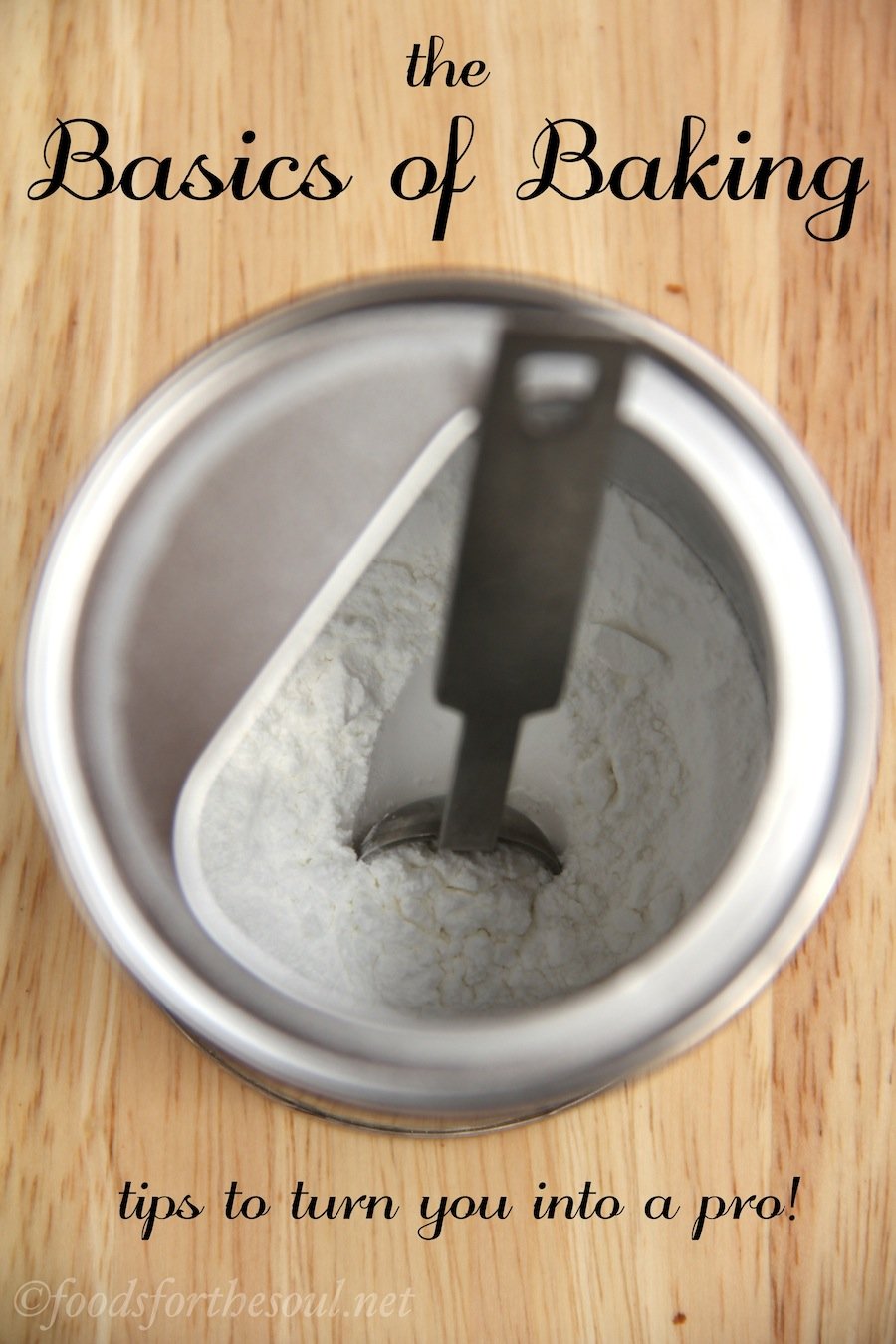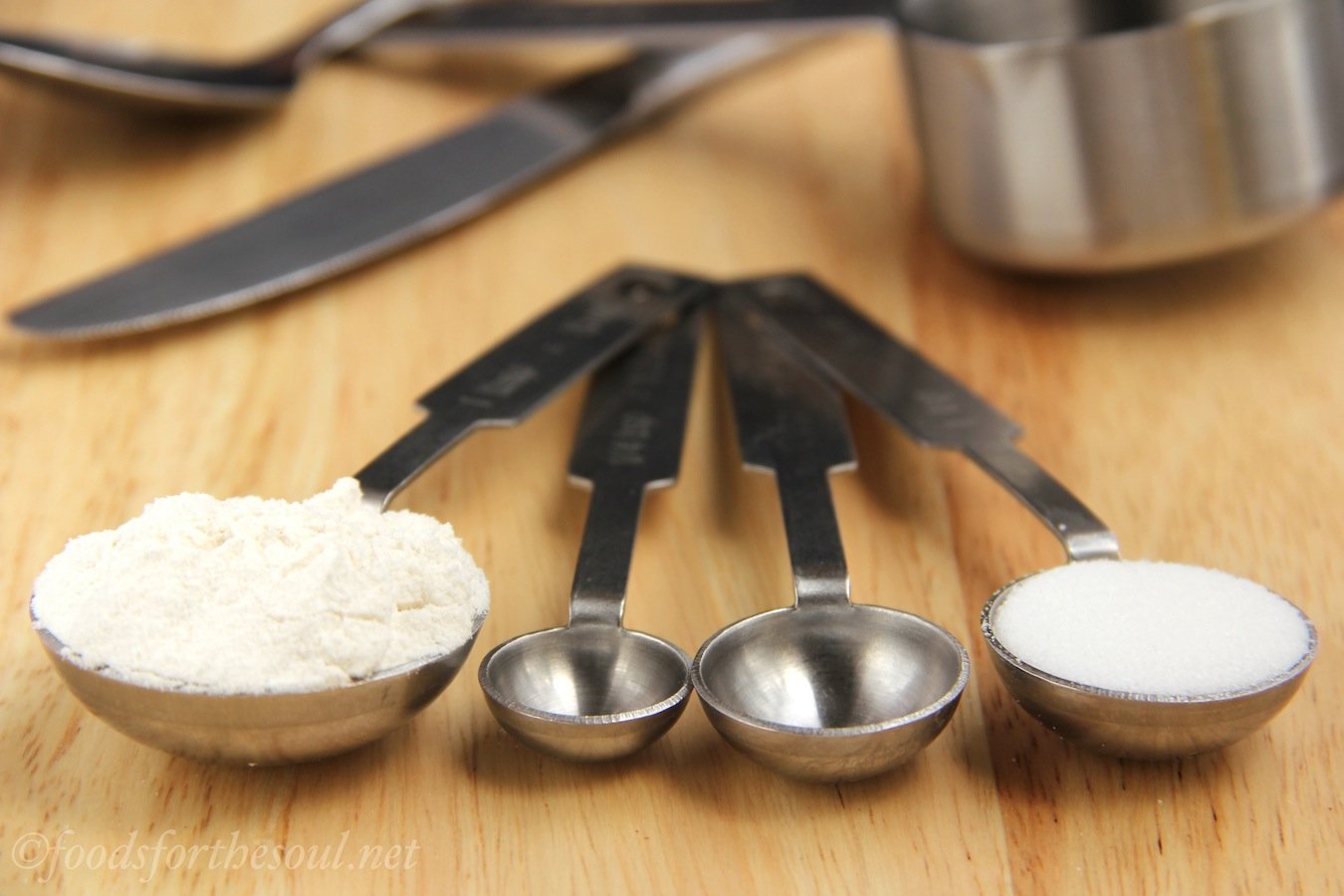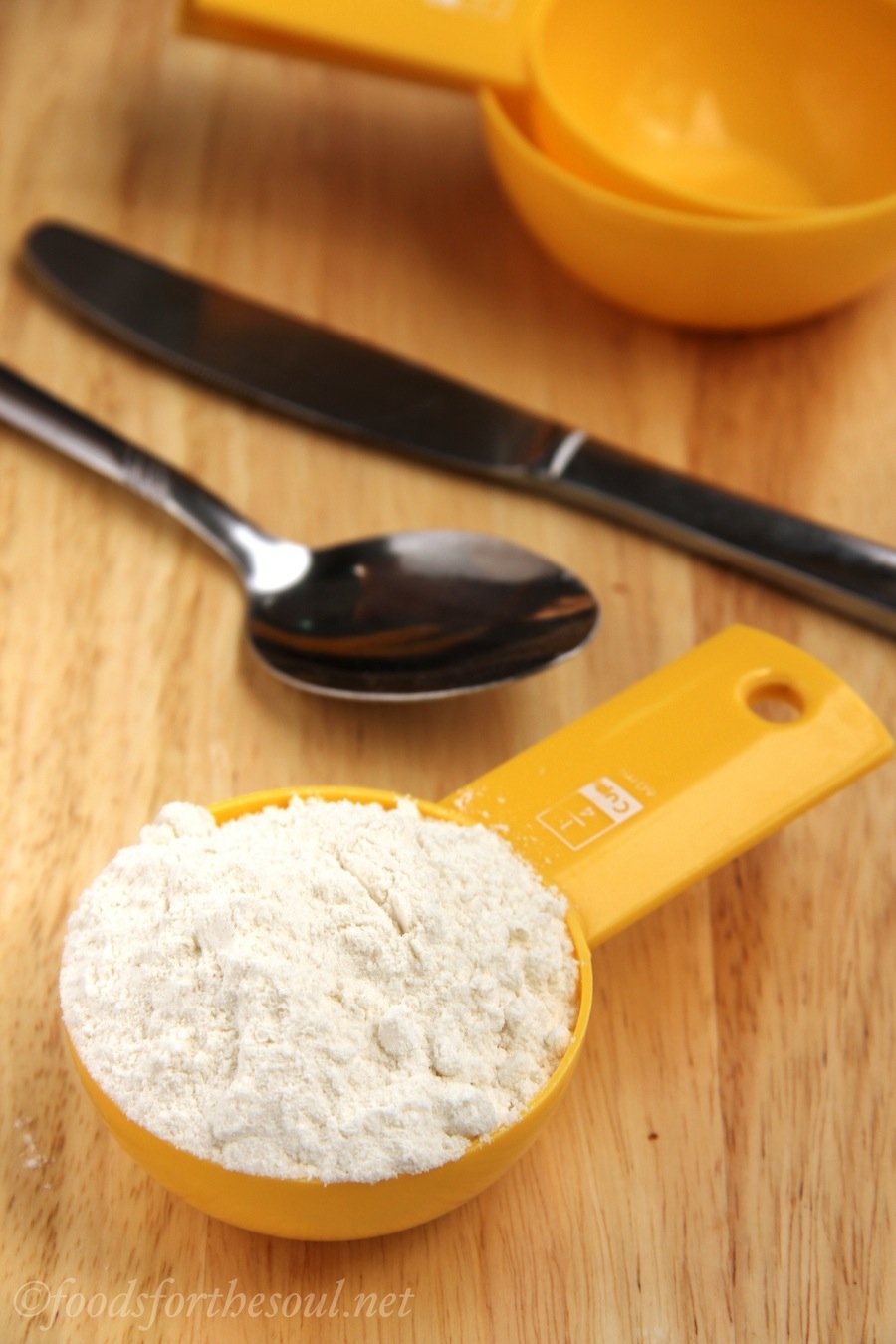Confession: I stole a set of measuring cups as a kid.
I wanted to be just like Mommy, flipping pancakes and baking chocolate chip cookies, so when she left the old tan set sitting on the counter, I slipped in, stood on my tippy-toes, and snuck off before anyone saw me. And despite banging them around my Fisher Price Kitchen for all of preschool, it took me another 13 years to finally figure out how to use them properly.
But I completely forgot to share those secrets with you!
So today, we’re going back to the basics. Many of you may know these tips and tricks already, but skim through them anyway—every one of them will convert you from a beginner into a baking pro!
The Recipe
- Read through the recipe completely before beginning. I know, I know… You’re probably rolling your eyes at me. But raise your hand if you’ve ever dove straight into creaming butter or mixing muffin batter after only reading the ingredients list. (Both of my hands are high up in the air!) It only takes an extra minute or two, but reading through every step will save you time, flour, and lots of burned cookies.
- Watch out for commas! It’s a subtle point, but how the ingredients are written dictates how you prepare and measure them. For example, “1 cup sifted all-purpose flour” means sift the flour before measuring, whereas with “1 cup all-purpose flour, sifted,” you would measure first and sift after. Perform any tasks on the ingredients in the order that they’re written: anything that comes after the comma is done second.
- Understand the language. Sliced, diced, chopped, cut, broken, beaten… Each word means something slightly different, so if you aren’t familiar with any of the terms in a recipe, look them up!
The Measurements
A quick tip before we dive in… I highly recommend investing in a kitchen scale, especially for measuring dry ingredients! This is the one I own. It’s really affordable, and I’ve used it almost every day for 4+ years. It’s my #1 secret for making sure that my recipes turn out with the perfect taste and texture every time I make them!
- Flours. All-purpose, whole wheat, gluten-free, peanut, almond, coconut, cocoa powder, and even oats are all the same. Use a fork to “scoop” up flour (or whatever you’re measuring!) from the container, and lightly shake the fork back and forth over the top of your measuring cup to transfer the flour into it (like you’d do with a hair drier!). Once there’s a small mound of flour extending above the rim of the measuring cup, then place the flat backside of a knife against the top of the measuring cup, and gently scrape it across the top to get rid of the excess flour. Never “pat” the flour down with the knife or fork, and never shake the measuring cup either. Also, do NOT scoop the flours, cocoa powder, or oats directly out of the container with the measuring cup or pack them in. This results in 1.5 times more than is required in a recipe, which dries out your baked goods and turns them crumbly. Not good! However, this fork method acts like a sifter (without dirtying another dish!) and guarantees you’ll add the correct amount of flour to your recipe!
- Leaveners. With baking powder and baking soda, lightly fluff the leavener with a measuring spoon before scooping it out and leveling with a knife. Some containers have a flat edge built in—that works too!
- Sugars. For white sugar, use the same technique described for flours, except use a spoon instead of a fork. With brown sugar, lightly pack it into the measuring cup using a fork or spoon until the cup is completely filled and level (unless the recipe states otherwise). When you invert the measuring cup, the brown sugar should be packed tightly enough to hold its shape.
- Salt and spices. Treat them like the leaveners: fluff, scoop, level.
- Butter and margarine. Most stick-style butters and margarines are wrapped in a label with tablespoons marked on the side. Count out how much you need, and cut through the stick with a sharp knife. You should avoid using a butter knife because the blade is duller and you won’t carve off as accurate of an amount. With tub-style butter, margarine, and shortening, press the necessary quantity into a measuring spoon or cup, and level with a knife.
- Liquids. Milk, oil, juice, honey, syrup, and extracts are a little tricky. If using regular measuring cups, place the measuring cup on the counter, pour in the liquid, and get down at eye level. The liquid at the edges tends to stick to the sides of the cup, while the liquid in the center curves upward ever so slightly. You want to make sure the center of the liquid is even with the rim of the cup for the most accurate measurement. You can also use a clear liquid measuring cup instead. Here, the liquid in the center sinks down a touch. (In science-speak, it’s called a meniscus!) The bottom of that concave meniscus should brush the top of the marking lines on the liquid measuring cup’s side, almost so it looks as if you’ve added slightly more of the liquid. For teaspoons and tablespoons, fill them to the brim but not overflowing or bulging out the top. And be careful when pouring the liquids into the mixing bowl! (Also, never use a kitchen scale to measure liquids. The “ounces” option on kitchen scales is for dry ounces, not liquid ounces!)
I may add to this post as new things come up in the future. But for now, it’s time to bake something sweet! Which of these recipes are you going to try next? I can’t wait to hear!! ♡





Hi Amy, for the healthy one-bowl banana mini muffins, can I substitute white whole wheat flour with coconut /almond flour, and if yes how much?
Thanking you in advance for your time and effort to assist.
I’m honored that you’d like to try my one-bowl banana mini muffins recipe Kolitsoe! Coconut flour definitely won’t work. I typically don’t recommend almond flour because it lacks gluten, the protein that helps baked goods both rise and maintain their shape while cooling. Without gluten, your muffins will likely turn out denser and may collapse while cooling. But if you don’t mind that texture difference, the flavor will remain the same! 🙂 I’d love to hear what you think of the muffins if you try making them!
Thanks Amy. There’s the psyllium husk and or xanthan gum that I think could help.
All the best.
Kolitsoe
Although I don’t have experience with psyllium husk, I do have experience with xanthan gum, and it would definitely help! 🙂
Any chance you could add weights for the flours and dry ingredients? I find using a scale much easier than trying to measure flours correctly.
I’m honored that you’d like to try my recipes! I’ve actually included the gram measurements for the majority of my recipes. They’re in parentheses, right next to the imperial cup and tablespoon measurements — I know it can be easy to miss! 🙂 I completely agree; I prefer using a kitchen scale as well. Much easier, faster, and more accurate too! Therefore, I’m working on going back and adding the weights to my older recipes, but since I have over 1300 recipes on my website, it’s taking a bit of time to do! 😉
I can’t wait to hear what recipe of mine you decide to try making next!
Hi Amy
I am about to try you one bowl cornmeal bread. However, I am confused about the measuring part. I weighed my cornmeal and it is 43 grams for 1/4 cup. I did the rest of the math but came up with a weird number. Please help me know what amount I would need?
I’m so honored that you’d like to try my cornbread recipe, Mary-Jo! If you’re using a kitchen scale to measure, then you don’t need to do any of the math to figure out how many cups you need of your particular brand of cornmeal. Simply use the gram measurement for the cornmeal that I provided in the Ingredients list! 🙂 I’d love to hear what you think of the cornbread if you end up making it!
in the zucchini bread, can i substitute almond milk for non fat milk?
I really appreciate your interest in my recipe, Denise! I’m not sure which of my six zucchini bread recipes that you’d like to try, but I’ve actually covered the answer to this exact question in the Notes section of all six recipes (the Notes section is located directly underneath the Instructions!). I know it can be really easy to miss that section! 🙂 I can’t wait to hear what you think of the zucchini bread if you try making it!
Hi Amy! I’m from the UK and we don’t tend to use cups as a way to measure, and lots of different websites give different equivalents for cups to grams. I was wondering if you have a reliable conversion chart from cups to grams? Thank you!
I’m honored that you’d ask me for advice, Elena! Unfortunately, there isn’t a “one size fits all” conversion chart for cups to grams. This is because weight (grams) is based off of density, rather than volume (cups). If you measured out 1 cup of cotton balls versus 1 cup of sand, they’d take up the same amount of space (volume)… But the cup cotton balls would definitely weigh less than the cup of sand! Or if you measured out 1 pound of cotton balls versus 1 pound of sand, you’d end up with a small handful of sand… And a pillowcase or two full of cotton balls! Same weight, different volume. Does that make sense?
The same thing applies to different ingredients. 1 cup of flour weighs 120g, 1 cup of oats weighs 100g, 1 cup of cocoa powder weighs 80g, and 1 cup of butter weighs 224g. So although these ingredients take up the same amount of space (volume), they’ll have different weights because of their different densities.
Does that make sense? 🙂
Hi Amy! That totally makes sense, and is kind of what I’d gathered after seeing lots of different sites’s charts. Thank you so much!
It’s my pleasure, Elena! I’m happy to help! 🙂
I made this cake today and loved it. I used almond flour as that’s my flour of choice but kept everything else the same. Best banana cake yet! Thanks for sharing!
I’m so glad you enjoyed the cake, Catarina! Thank you so much for taking the time to let me know — that truly means a lot! 🙂